Realizing Children’s Rights in Angola

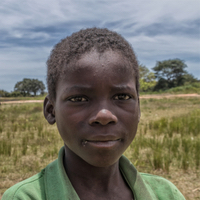
Angola is a country recovering from a war-filled recent history, which has strongly affected its territory, its inhabitants (Koné, 2018), and its political system, and, as a result, the respect of children’s rights. The civil war, following the War of Independence, ended in 2002, after 27 years of conflict (Perspective Monde, n.d.). Today, the country is suffering the consequences of these years of conflict and poor governance (U.S. Department of State, 2018), which makes it difficult for children’s rights to be respected.

Children’s Rights Index: 5,89 / 10
Black level: Very serious situation
Population: 32.86 million
Pop. ages 0-14: 46%
Life expectancy: 61.14 years
Under-5 mortality rate: 74.7‰
Angola at a glance
Angola is a country with a lot of potentials, notably due to its abundant natural resources, including oil, water, diamonds and other minerals. It is the second-biggest oil-producing country in Sub-Saharan Africa. Additionally, its soil is fertile, and it possesses a lot of human capital, with a young population (A.F.D., n.d.).
At a political level, Angola experienced a transition of government in 2017, after 38 years under the same president. Since the end of the Civil War in the 1990s, the country has remained relatively stable (US Department of State, 2018, p. 2), and even participates at the regional level, notably in the African Union. It helps maintain peace in the region with peace-keeping missions (US Department of State, 2018, p. 2).
However, Angola is still suffering from the legacy of colonisation and the civil war. Additionally, public policy has not prioritised investment in oil resources in the sectors of health, education or public services, sectors which should have priority (US Department of State, 2018, p. 2).
With corruption a real scourge and minefields threatening the lives of 29 million people in numerous provinces, economic development is limited (US Department of State, 2018). For example, in 2016 mines claimed 44 lives, including 30 children. They create a dangerous environment for children, particularly in rural areas (Committee on the Rights of the Child, 2018, p. 6). According to the Human Development Index (HDI), which attempts to measure countries’ level of development, Angola was ranked 187th out of 228 in 2018 (Rankings – Human Development Index (HDI)).
Status of children’s rights[1]
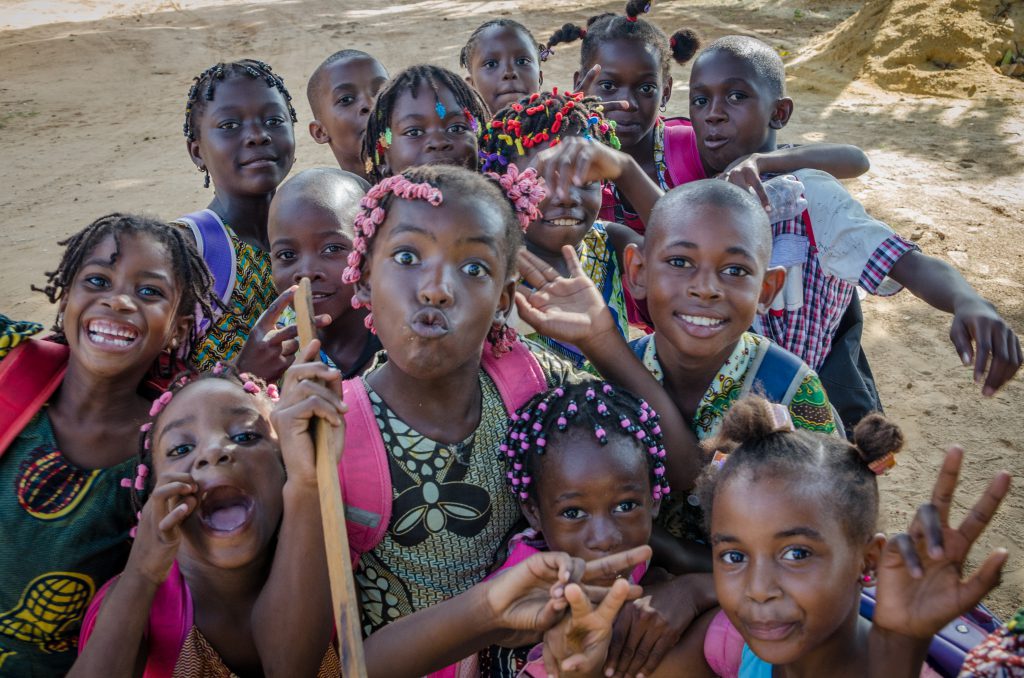
On an international and regional level, Angola has been part of the Convention on the Rights of the Child since 1990. In 2005, it ratified the Optional Protocol to the Convention on the Rights of the Child,, concerning the sale of children, child prostitution and child pornography, and 2 years later, in 2007, the Optional Protocol to the Convention on the Rights of the Child, on the involvement of children in armed conflict. However, it has not yet ratified the Optional Protocol to the Convention on the Rights of the Child on a communications procedure.
In 2001, it ratified the 1999 International Labour Organisation (ILO) Convention (no. 182) concerning the prohibition of the worst forms of child labour and immediate action to eliminate them. In 2014, it ratified the Protocol to Prevent, Suppress and Punish Trafficking in Persons especially Women and Children, supplementing the United Nations Convention against Transnational Organised Crime, as well as the Convention on the Rights of Persons with Disabilities and the related Optional Protocol. It should be noted that Angola has been a party to the African Charter on the Rights and Welfare of the Child since 1992.
In terms of national law, efforts have been made and recognised by the Committee on the Rights of the Child, which encourages the state to continue and reinforce them in order to bring national law into line with the Convention as quickly as possible (Committee on the Rights of the Child, 2018, p. 2). For example, there is Law No. 25/12 on the protection and integral development of the child, or the Children’s Act, as well as the National Action Plan of 2013-2020, entitled ‘Education for all’. Additionally, the state has put in place a social protection programme, called Cartão Kikuia, to help vulnerable families living in extreme poverty (Committee on the Rights of the Child, 29, p. 5).
However, the economic crisis resulting from the drop in crude oil prices and the Covid-19 pandemic (Dubost & Lavaud, 2021; Maussion, 2021) has meant that the Angolan state has less money to invest in social programmes to improve the situation of children and ensure the respect of their rights, which it has done little of in the past. Public spending has been greatly reduced as a result of this economic situation (Committee on the Rights of the Child, 2018, p. 3).
As a result, “the profits of economic growth, especially income from the oil, gas and diamond sectors, should be used to reduce poverty, particularly among children”, as maintained by the Committee on the Rights of the Child (Committee on the Rights of the Child, 2018, p. 3). It should be noted that corruption is rampant in Angola, with much money laundering in the public sector (Human Rights Committee, 2019, p. 3). The lack of resources is mentioned in most reports by UN committees cited below.
Meeting children’s needs
Right to education
Concerning education, efforts are being made by Angola. For example, children are increasingly attending nursery, primary and secondary school. The gross enrolment rate in primary and secondary schools has increased from 13.19% in 2014 to 97.5% in 2016 (Committee on the Rights of the Child, 2018, p. 13).
However, the Angolan education sector lacks resources and has seen a drop in budget allocations (Committee on the Elimination of Discrimination against Women, 2019, p. 11). The Committee on the Elimination of Discrimination against Women has sounded alarm bells regarding the “shortages of qualified teachers, poor learning environments and suspension of the construction of new schools, forcing girls to walk long distances to school and depriving them of adequate sanitary facilities” (Committee on the Elimination of Discrimination against Women, 2019, p. 11).
Moreover, education programmes are judged patriarchal and are brimming with sexist stereotypes about girls and women (Committee on the Elimination of Discrimination against Women, 2019, p. 11). Girls are under-represented in traditionally male-dominated areas of education, such as technical and vocational education (Committee on the Elimination of Discrimination against Women, 2019, p. 11).
However, the adoption of Basic Law No. 17/16 of the Education and Teaching System, which requires the gradual extension of compulsory and free education to lower secondary education, generally for children from 12-14 years of age (Committee on the Rights of the Child, 29, p. 5), should be acknowledged, as well as the National Action Plan “Education for All” 2013-2020 (Committee on the Rights of the Child, 29, p. 5). However, obstacles persist, such as the practice among parents of bribing education officials to secure school places for their children (Committee on the Rights of the Child, 2018, p. 13).
Right to protection
Violence remains entrenched as a solution: corporal punishment is tolerated in certain contexts (Human Rights Committee, 2019, p. 12). Moreover, children accused of witchcraft, especially girls, suffer ill-treatment (Human Rights Committee, 2019, p. 12). Violence by teachers is also frequent (Committee on the Rights of the Child, 2018, p. 7).
In 2013, the Executive Plan to Combat Domestic Violence was adopted, supported by a multisectoral council established to help implement it (Human Rights Committee, 2019, p.2). However, women and girls continue to be subject to a lot of violence, and it is very difficult for the state to ban this completely (Committee on the Elimination of Discrimination against Women, 2019, p. 8). There have been some notable efforts, such as the adoption of resolution 28/16 condemning all forms of violence against children, particularly sexual violence, abuse, trafficking and exploitation (Committee on the Rights of the Child, 29, p. 4).
Additionally, due to stigmatisation, many of these acts are not reported out of fear of reprisals and lack of trust in law enforcement authorities (Human Rights Committee, 2019, p. 4). Victims are also stigmatised by medical professionals (Committee on the Elimination of Discrimination against Women, 2019, p. 8). Moreover, women and girls are not very aware of the few possible pathways that exist for fleeing domestic violence (Human Rights Committee, 2019, p. 4).
Right to health
The Committee on the Rights of the Child prioritises the respect for children’s right to enjoy the best possible state of health, and the fight against infant mortality and morbidity, in its recommendations for Angola (Committee on the Rights of the Child, 2018, p. 2). Angola is equipped with a National Health Development Plan between 2012 and 2025, one of the objectives of which is to reduce maternal, infant and child mortality and morbidity (Committee on the Rights of the Child, 2018, p. 1). At the same time, adequate nutrition is a real challenge for the population of Angola, particularly those living in rural areas, where there is currently a high rate of stunted children under five years of age (Committee on the Rights of the Child, 2018, p. 2).
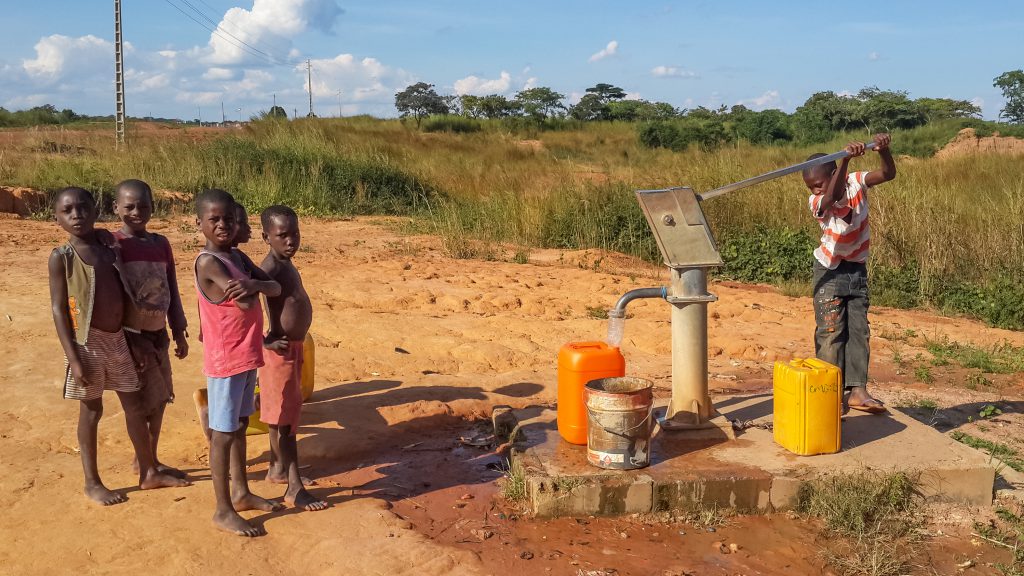
Undernutrition is also “prevalent” in the country (Committee on the Rights of the Child, 2018, p. 12), with chronic undernutrition (stunting) of children under five years of age having increased from 29% in 2007 to 38% in the period 2015-2016. Undernutrition is also responsible for 45% of child deaths (Committee on the Rights of the Child, 2018, p. 12). Access to water and sanitation is also very lacking (Committee on the Rights of the Child, 2018, p. 12). The south of Angola suffers from famine due to a series droughts, intensified by climate change (Nyembo SJ, 2021).
Sexual health is a real challenge for Angola, with a high rate of adolescent pregnancy, notably on account of limited access to sexual and reproductive health services, including contraceptives (Human Rights Committee, 2019, p. 5; Committee on the Elimination of Discrimination against Women, 2019, p. 13).
Right to identity
Identity is very important to enable the registration of births (Human Rights Committee, 2019, p. 12), with measures like the waiving of registration fees for first-time applicants for civil registration, so that they do not become stateless. A child without a birth certificate and without registration has no evidence linking them to their country and its protection. Efforts are being made by Angola, including the waiving of fees (Committee on the Rights of the Child, 2018, p. 7). As well as children, Angola is a country that takes in migrants and asylum seekers. Efforts are being made to record the children of Congolese refugees (Human Rights Committee, 2019, p. 10).
However, the registration rate remains very low, especially in rural areas (Human Rights Committee, 2019, p. 12). The fact that both parents must be present to register a birth constitutes a real obstacle to the process (Committee on the Elimination of Discrimination against Women, 2019, p. 11). This can cause problems when determining a child’s age (Committee on the Rights of the Child, 29, p. 5).
Since the legal requirement for all children to obtain an identity card before the age of 10 is not always respected, it is easier to enlist young people in the armed forces (Committee on the Rights of the Child, 2018, p. 4), especially since, in case of doubt, two witnesses are enough to determine a child’s age (Committee on the Rights of the Child, 2018, p. 4), except in Luanda province, where psychological tests are carried out.
Risk factors → country-specific challenges
Child trafficking
Angola is striving to arm itself against the scourge of human trafficking; for example, with Law No. 3/14 on crimes linked with money laundering and the trade in human beings, which criminalises all forms of trafficking, including those linked with the exploitation of children for sexual purposes and prostitution (Committee on the Rights of the Child, 29, p. 7). In 2014, the government established the Interministerial Commission to Combat Human Trafficking (Human Rights Committee, 2019, p. 1; Committee on the Elimination of Discrimination against Women, 2019, p. 9).
However, despite these efforts, reports demonstrating the complicity of law enforcement officials in trafficking and the exploitation of prostitution cannot be denied (Committee on the Elimination of Discrimination against Women, 2019, p. 9). Girls as young as 12 from Brazil, China, the Democratic Republic of the Congo and Vietnam are sent to Angola, or pass through the country for purposes of sexual exploitation and criminal activity (Committee on the Elimination of Discrimination against Women, 2019, p. 9). Undocumented migrant children from the Democratic Republic of the Congo are sexually exploited or must carry out forced labour, such as diamond mining or cattle herding (Committee on the Rights of the Child, 29, p. 5).
As of yet, there is no effective preventive strategy to combat this scourge (Committee on the Rights of the Child, 29, p. 5) and no real system of aid for victims of human trafficking (Committee on the Elimination of Discrimination against Women, 2019, p. 9). Shelters and legal, medical and psychological services sorely lack human, technical and financial resources to protect children who are victims of trafficking (Committee on the Elimination of Discrimination against Women, 2019, p. 9). Moreover, cases of sexual violence against undocumented asylum-seeking girls by police have been reported to the Committee on the Elimination of Discrimination against Women (Committee on the Elimination of Discrimination against Women, 2019, p. 15).
More generally, there is no data on incidents of the sale of children, child prostitution, child pornography and trafficking in children, but as of March 2018, five investigations concerning the sale of children have been opened (Committee on the Rights of the Child, 29, p. 2). A database on perpetrators of crimes against children does not exist, partly as a result of the complicity of the national police, which refuses to communicate data to the Interministerial Commission to Combat Trafficking in Persons (Committee on the Rights of the Child, 29, p. 2). As a result, there is still a lack of clarity concerning these violations to the protection of children’s rights.
Child labour and sexual exploitation
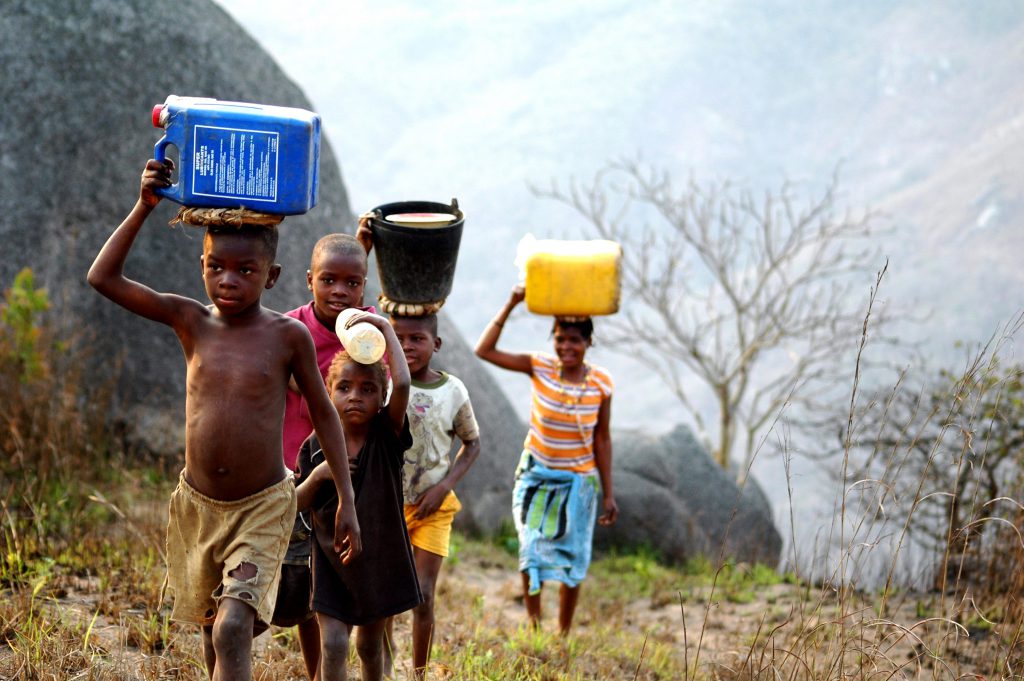
Extreme poverty, particularly present in Angola, can lead not only to child trafficking, but also to child labour (Committee on the Rights of the Child, 29, p. 5). Forced labour is a real scourge in Angola (Committee on the Rights of the Child, 2018, p. 14), especially in the informal economy (E/C.12/AGO/CO/4-5 p. 7). Few efforts are undertaken to fight child labour, especially in mines (Human Rights Committee, 2019, p. 8). Children are thus victims of forced and/or hazardous labour, especially in the domestic work, mining, construction and agricultural sectors (Committee on the Rights of the Child, 29, p. 5).
Sexual exploitation is a real challenge in Angola. Sexual tourism is very widespread, despite the adoption in 2010 of the Code of Conduct for the Protection of Children from Sexual Exploitation in Travel and Tourism (Committee on the Rights of the Child, 29, p. 6). Moreover, there is no legal framework or even information campaign to protect children from sexual exploitation and sexual violence online (Committee on the Rights of the Child, 29, p. 6).
Discrimination
In terms of discrimination, efforts are being carried out by Angola. For example, the new Penal Code, adopted in 2019, criminalises acts of discrimination based on sexual orientation (Human Rights Committee, 2019, p. 1). Gender-based discrimination is also acknowledged, with the adoption of different policies, including the National Policy for Gender Equality in December 2013 (Human Rights Committee, 2019, p. 1), and the creation of forums for discussion of gender equality in communities, with the participation of traditional authorities (sobas) (Committee on the Elimination of Discrimination against Women, 2019, p. 7).
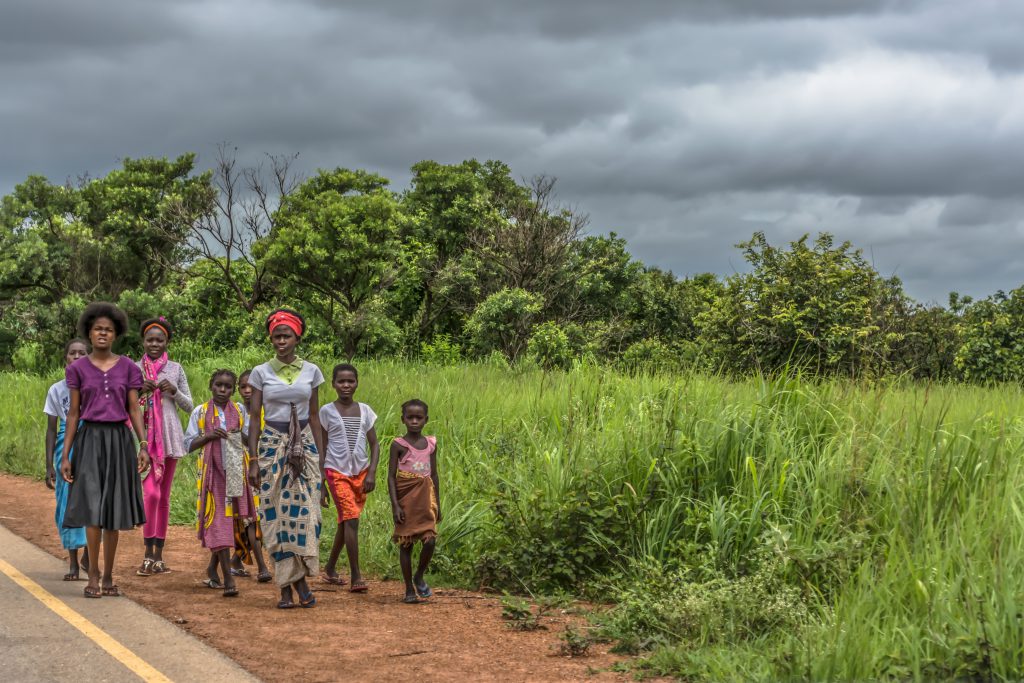
However, patriarchal norms that hold sway over society are still deeply entrenched, including child and/or forced marriage, dowry, polygamy, levirate marriage, female genital mutilation and the social exclusion of women and girls accused of practising witchcraft (Human Rights Committee, 2019, p. 5; Committee on the Elimination of Discrimination against Women, 2019, p. 7). It should be noted that, thanks to the 2019 reform to the Penal Code, female genital mutilation is now considered an offence (Human Rights Committee, 2019, p. 5).
Moreover, intersecting forms of discrimination are rarely acknowledged. For example, girls living in rural areas, disabled people, people with albinism, people living with HIV/AIDS and members of the LGBTQ community are victims of serious discrimination, which has negative repercussions on their rights and their access to services such as health, education and justice (Committee on the Elimination of Discrimination against Women, 2019, p. 14).
Child marriage
Article 24 of the Family Code permits early marriage from the age of 16 for boys and from the age of 15 for girls (Human Rights Committee, 2019, p. 5; Committee for the Elimination of Discrimination against Women, 2019, p. 7). There is real impunity regarding forced marriages: no investigations, prosecutions or sanctions have yet been seen (Human Rights Committee, 2019, p. 5), which stems notably from the fact that there exists very little information on this kind of practice. The same applies to polygamous marriage and levirate unions, which are governed by customary law (Human Rights Committee, 2019, p. 5; Committee on the Elimination of Discrimination against Women, 2019, p. 7).
Written by Juliette Bail
Translated by Alexandra Macpherson
Proofread by Sharon Rees
Works cited:
AFD. (s.d.). Angola. Récupéré sur Agence française du développement: https://www.afd.fr/fr/page-region-pays/angola, accédé le 28 novembre 2021.
Comité des droits de l’enfant. (2018, juin 27). Observations finales concernant le rapport de l’Angolavalantcinquième à septième rapports périodiques. Récupéré sur Nations Unies – Convention relative aux droits de l’enfant: https://tbinternet.ohchr.org/_layouts/15/treatybodyexternal/Download.aspx?symbolno=CRC/C/AGO/CO/5-7&Lang=En, accédé le 28 novembre 2021.
Comité des droits de l’enfant. (2018, juin 29). Observations finales concernant le rapport soumis par l’Angolaen application du paragraphe 1 de l’article 8 du Protocole facultatif à la Convention relative aux droits de l’enfant, concernantl’implicationd’enfants dans les conflitsarmés.Récupéré sur Nations Unies – Convention relative aux droits de l’enfant: https://documents-dds-ny.un.org/doc/UNDOC/GEN/G18/194/96/PDF/G1819496.pdf?OpenElement, accédé le 28 novembre 2021.
Comité des droits de l’enfant. (29, juin 2018). Observations finales concernant le rapport soumis par l’Angolaen application du paragraphe 1 de l’article 12 du Protocole facultatif à la Convention relative aux droits de l’enfant, concernant la vente d’enfants, la prostitution des enfants et la pornogr.Récupéré sur Nations Unies – Convention relative aux droits de l’enfant: https://tbinternet.ohchr.org/_layouts/15/treatybodyexternal/Download.aspx?symbolno=CRC/C/OPSC/AGO/CO/1&Lang=En, accédé le 28 novembre 2021.
Comité des droits de l’homme. (2019, mai 8). Observations finales concernant le deuxième rapport périodique de l’Angola.Récupéré sur Nations Unies – Pacte international relatif aux droits civils et politiques: https://documents-dds-ny.un.org/doc/UNDOC/GEN/G19/134/37/PDF/G1913437.pdf?OpenElement, accédé le 28 novembre 2021.
Comité pour l’élimination de la discrimination à l’égard des femmes. (2019, mars 14). Observations finales concernant le septième rapport périodique de l’Angola. Récupéré sur Nations Unies – Convention sur l’élimination de toutes les formes de discrimination à l’égard des femmes: https://documents-dds-ny.un.org/doc/UNDOC/GEN/N19/071/68/PDF/N1907168.pdf?OpenElement, accédé le 28 novembre 2021.
Dubost, S., & Lavaud, K. (2021, mars 19). Situation économique et financière de l’Angola au 19 mars 2021.Récupéré sur Direction générale du Trésor – France: https://www.tresor.economie.gouv.fr/Articles/2021/03/19/situation-economique-et-financiere-de-l-angola-au-19-mars-2021, accédé le 28 novembre 2021.
Koné, A. (2018). La persistance du conflitangolais entre 1991 et 2002. Monde(s).
Maussion, E. (2021, mai 6). [Série] Redresser l’économieangolaise, la mission impossible de João Lourenço ? (4/5). Récupéré sur Jeuneafrique: https://www.jeuneafrique.com/1140430/economie/angola-politique-economique-la-mission-impossible-de-jlo/, accédé le 28 novembre 2021.
Nyembo SJ, D. (2021, octobre 25). Angola :luttercontre la famine due à la sécheresse.Récupéré sur Vatican News: https://www.vaticannews.va/fr/afrique/news/2021-10/angola-il-faut-agir-urgemment-pour-lutter-contre-la-secheresse.html, accédé le 28 novembre 2021.
Palmarès – Indicateur de développementhumain (IDH). (s.d.). Récupéré sur PopulationData: https://www.populationdata.net/palmares/idh/#Angola, accédé le 28 novembre 2021.
Perspective Monde. (s.d.). Angola. Récupéré sur Perspective Monde: https://perspective.usherbrooke.ca/bilan/servlet/BMHistoriquePays?codePays=AGO, accédé le 28 novembre 2021.
U.S Department of State. (2018, September 6). Angola. Récupéré sur Integrated Country Strategies: https://www.state.gov/wp-content/uploads/2019/01/ICS-Angola.pdf, accédé le 28 novembre 2021.
[1] This article in no way claims to give a complete or representative account of children’s rights in Angola: in fact, one of the many challenges here is the lack of up-to-date information on children, particularly translated into French or English. This article is based mostly on sources issued by the United Nations, which warrant the corroboration of resources from other organisations.

